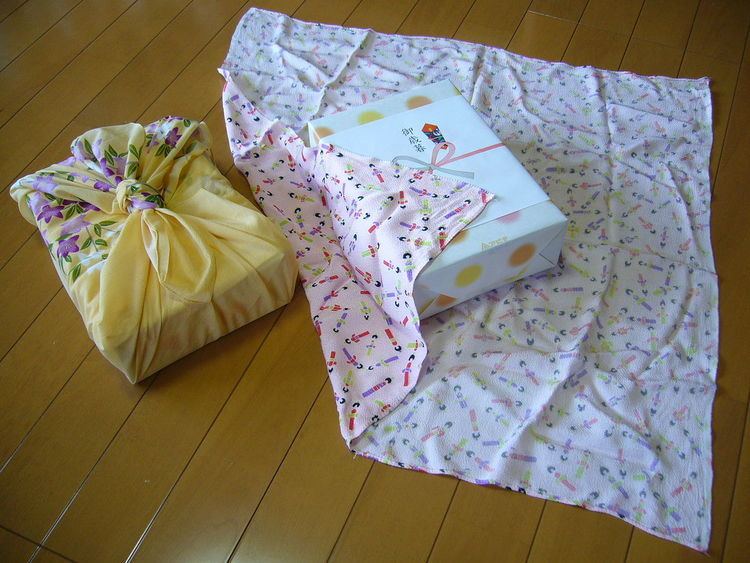 | ||
Gift wrapping is the act of enclosing a gift in some sort of material. Wrapping paper is a kind of paper designed for gift wrapping. An alternative to gift wrapping is using a gift box. A wrapped or boxed gift may be held closed with ribbon and topped with a decorative bow (an ornamental knot made of ribbon).
Contents
History
The use of wrapping paper is first documented in ancient China, where paper was invented in 2nd century BC. In the Southern Song dynasty, monetary gifts were wrapped with paper, forming an envelope known as a chih pao. The wrapped gifts were distributed by the Chinese court to government officials. In the Chinese text Thien Kung Khai Wu, Sung Ying-Hsing states that the coarsest wrapping paper is manufactured with rice straws and bamboo fiber.
Although the Hall brothers Rollie and Joyce Hall, founders of Hallmark Cards, did not invent gift wrapping, their innovations led to the development of modern gift wrapping. They helped to popularize the idea of decorative gift wrapping in the 20th century, and according to Joyce Hall, "the decorative gift-wrapping business was born the day Rollie placed those French envelope linings on top of that showcase."
Western cultures
In Western culture, gifts are often wrapped in wrapping paper and accompanied by a gift note which may note the occasion, the receiver's name and the giver's name. In the United States, an additional 5 million tons of waste are generated over the Christmas gift-giving period; four million tons of this is wrapping paper and shopping bags. Some people attempt to avoid this by unwrapping gifts with care to hopefully allow the paper to be reused, while others use decorated cloth gift sacks that can be easily reused many times; both of these concepts are part of the Green Gifting trend that encourages recycling. Additionally, some people use old newspapers instead of wrapping paper.
Asian cultures
In Chinese culture, red wrapping denotes luck.
In Japanese culture, wrapping paper and boxes are common. However, the traditional cloth wrapping called furoshiki is increasing in popularity, particularly as an ecologically friendly alternative to wrapping paper.
In Korean culture, bojagi are sometimes used for gift wrapping. A yedanbo is a ceremonial gift bojagi used to wrap wedding gifts from the bride's family to the members of the groom's.
